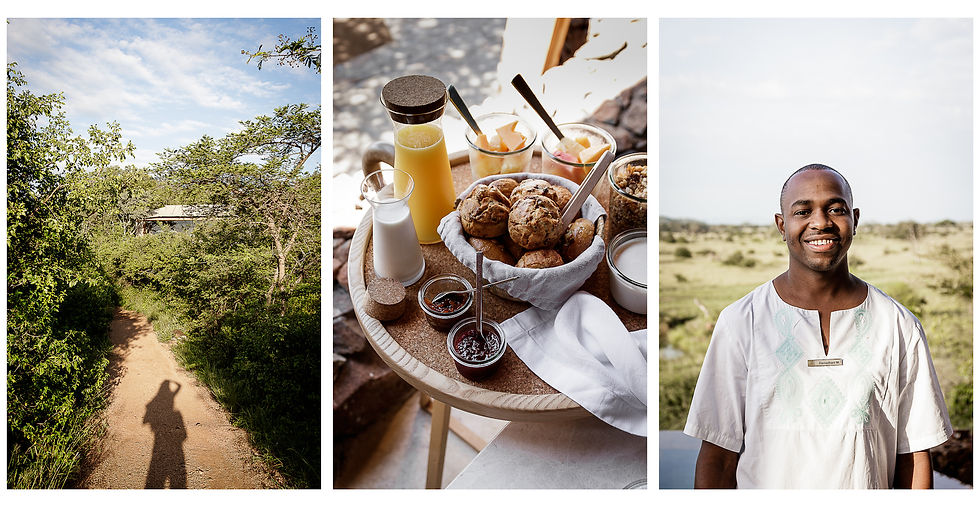Drinking The Singita Kool-Aid
- Emma Jude Jackson

- Oct 18, 2020
- 6 min read
Updated: Apr 9, 2024
The only thing that I dislike about the Serengeti is that at some point, on every trip, I have to leave.

This feeling has never been more heavy and foreboding than on my most recent trip because, well, Singita. While I could accept going back to (some kind of) normal life after previous trips, I knew almost instantly, as I walked into my tented suite at Singita Faru Faru Lodge, that I was in trouble. Faru Faru is a truly unique place in nature that has been thoroughly thought through, to offer an immersive, consciously crafted, modern safari experience.
The Serengeti in March is more green than I have had the pleasure of experiencing before and I don’t think there could be a better time to visit. Heavy (but short) rains have had an immense impact on parts of it and the banks of the Grumeti River are abundantly green, making Faru Faru even more camouflaged than usual. I had no idea what to expect on the drive over from Singita’s private Grumeti Air strip and could barely make out anything from the road in but once we had disembarked from our Land Rover and made our way down the entrance path and into the reception area, the beautiful and architecturally-inspired wooden and steel canopy that has been designed to frame and shelter the main lodge revealed itself, and what a feature it is.

The grand structure perfectly compliments existing stone work and neatly houses Faru Faru’s bigger and more spacious recreational areas, which include an open-plan restaurant, many lounge pockets (one of which is protected from all elements in a floor-to-ceiling glass room), a café-style bar at the heart of it, and terraced seating areas. But the best part, is that despite it being the grand structure that it is, it doesn’t take Faru Faru away from its place in nature and with all the natural light and abundant green that flows in, there is also a natural flow out to the fire pit, one of Faru Faru's two swimming pools, and the stretch of unfenced Serengeti beyond.
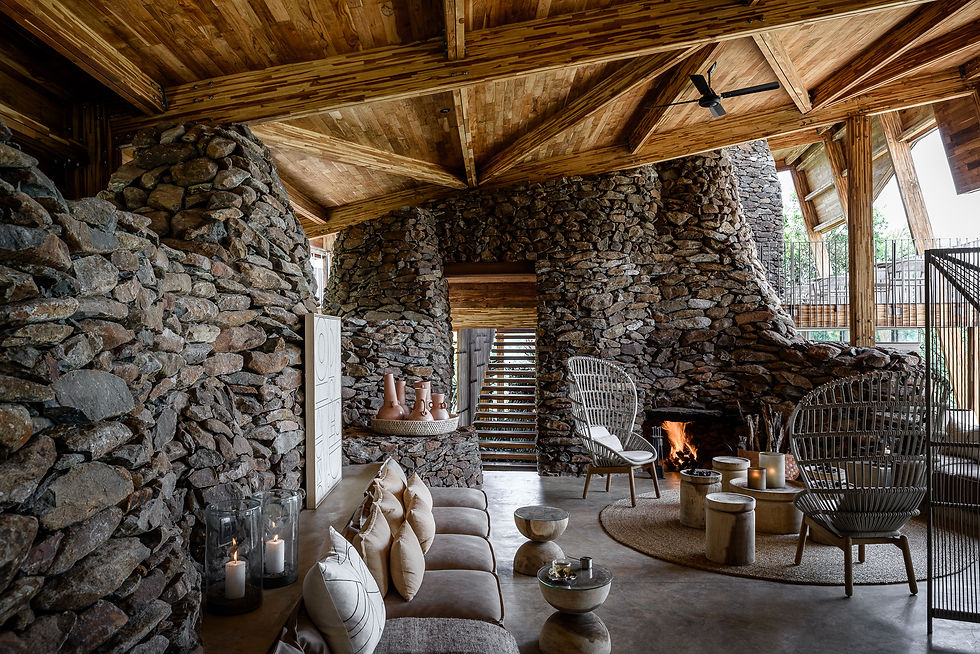



But where do we sleep? Oh, it only gets better.

Spread out in the surrounding landscape, along with a gym, a spa, and a substantial solar panel operation, nine enormous tented suites come into view, but only once you’re upon them.
Our tent lay parallel to the Grumeti River, hidden in the lush vegetation on its banks. The entire front of the space is made up of custom-designed, automated panoramic windows and when you open them, the absolute tranquility of the outdoors fills the room, along with the most ethereal light. It’s so quiet you could hear a pin drop.
Animals graze in the distance (although I imagine it’s a little more heated when the migration moves through, which it does and here is the proof) but in March it is more peaceful than a temple and whether you’re standing in the outdoor shower, taking a bath, sitting on the couch, or lying in bed, the view is captivating. I couldn’t actually tell you the ratio of time I spent in my room versus the rest of the lodge because I lost track of time. There is no concept of time at Singita Faru Faru, it is just one long sigh of relief from the outside world.



I was told that the tents remain largely unchanged from the original build which was over a decade ago, and goes to show how modern the original design was, but a new layout, and considered additions like black sanware and some key pieces of furniture, as well as geometric art and African-inspired decorative elements, tie the design back to the main lodge and Faru Faru’s new look.

And yet, while taking all of these superficial elements in, I knew I was still only scratching the surface of the true essence of Faru Faru. When it comes to Singita, guests are offered the most serene and subtle of hospitality experiences, everything feels incredibly light and effortless, but there has to be an enormous and extraordinary operation that goes on behind the scenes. That operation, however, with all of its many living parts, remains out of view. Not because there is something to hide but because it all comes down to something quite philosophical, I believe... The simple notion of inherently being something versus trying to be something.
“Performance is really important at Singita but just as and if not more, my purpose is to create a community where people feel supported and cared for and I think that creates an environment where people will make the best and most honest decisions for themselves. It’s all about how you empower people. Ah, it’s just a really wonderful place… (laughs) I drink the Singita Kool-Aid real hard.” - Gabi Gentil Hickson, one half of the energetic and efficacious husband and wife team who manage Singita Faru Faru and make it feel like home.
I enjoyed spending time with Gabi and Kyle, sharing cup after cup of Singita Kool-Aid, while hearing about what it is like to work for the company, the progressive training programmes Singita offers all their staff (from world-class hospitality courses to individual skills development), and what managing a luxury safari lodge in Africa entails.
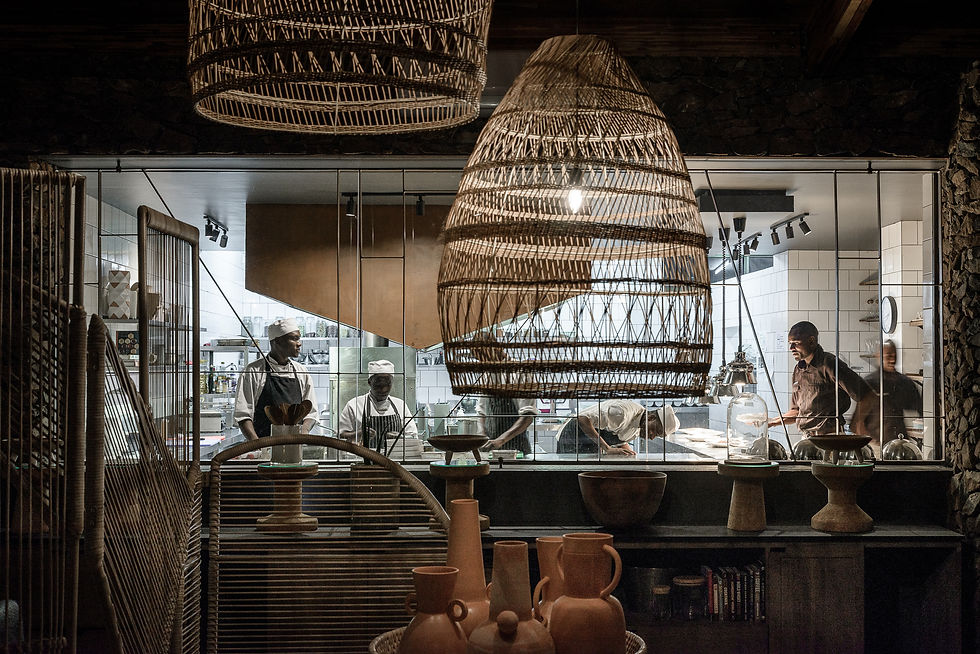
Singita is in many ways a hospitality business but hospitality as a means to an end. The real goal and what hospitality services, is education, conservation, and leaving a legacy. While these broad terms are buzz words in Africa and more so at the moment than ever before, the Singita team (together with major players like the Grumeti Fund) has been working quietly and resolutely on this legacy for almost three decades, and despite having mastered the art of luxury and offering some of the most conscious and sophisticated hospitality in the world, as well as constantly evolving to meet the demands of the modern traveller, something I came to know through experiencing an evolved Faru Faru, it would be a mistake to assume they are about anything but the protection and preservation of wilderness.
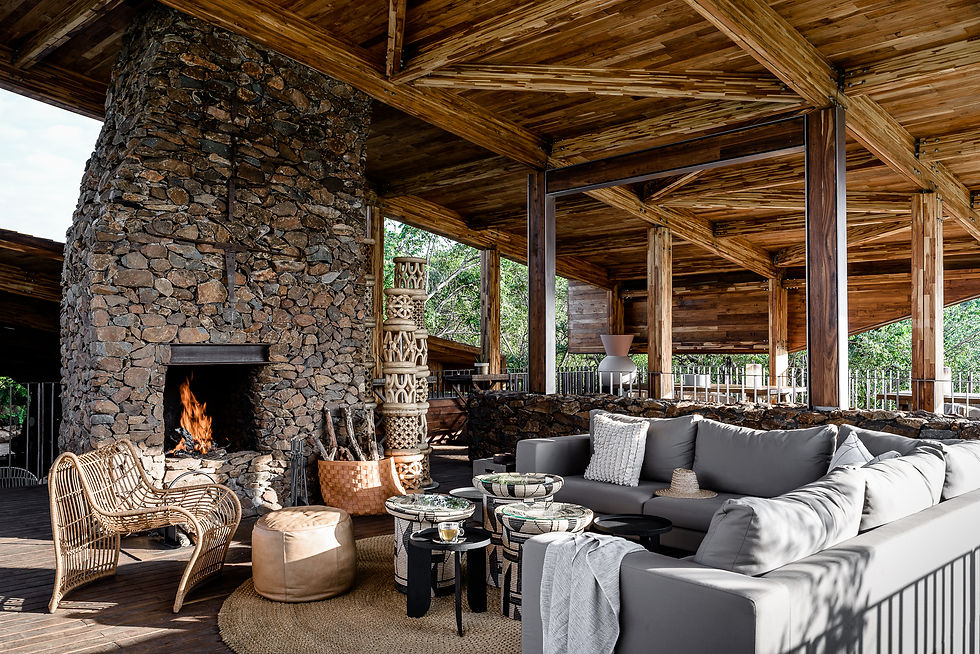
Everything feeds back to the greater goal that was first set out by founder and CEO, Luke Bailes. But “...it only works if our commitment to the local communities is so deep that they trust that what we’re doing, preserving this land is in their interest.” I came across this excellent article from Conde Nast Traveler if you’d like to read more about “How Africa's Most Luxurious Safari Camps Are Championing Conservation”.
During my stay at Faru Faru, I had the pleasure of visiting two more of Singita’s Grumeti Reserve Lodges, Sabora Tented Camp (a very special and authentic, completely open and unfenced tented camp) and Sasakwa Lodge (a grand estate, located high up on the Grumeti Reserve, giving it an unparalleled vantage point over the Serengeti plains below), where I had lunch with Grumeti Fund Executive Director, Stephen Cunliffe and Head of Communications, Beverly Burden. The scale of the projects they initiate, support and drive are substantial and crucial to sustaining not only the Singita hospitality business but also the Serengeti, and ultimately eco-tourism in Tanzania and East Africa as a whole. These people work very hard and are truly leaving a legacy.
This story would become a thesis if I went into every part of the Grumeti Fund so rather, if you’re genuinely interested in tourism and conversation, I implore you to go deeper and read more about the Grumeti Fund here.
Located in the western corridor of the Serengeti ecosystem, a region considered by many to be an international treasure, the Grumeti concessions are bountiful lands, rich in flora and fauna. But they weren’t always this way. At the turn of the century, uncontrolled hunting and rampant poaching had decimated local wildlife populations, in turn plunging the surrounding communities into poverty.
Thankfully, in 2002, American philanthropist Paul Tudor Jones made it his personal quest to rehabilitate and restore the Grumeti concessions to their former glory. He established the non-profit Grumeti Fund to begin the mammoth task of rehabilitating the degraded area, and shortly afterwards partnered with the world-renowned Singita safari brand.
This far-sighted partnership, combined with an effective management and law enforcement strategy, has helped animal populations rebound dramatically, turning Grumeti into the ultimate conservation success story and one of the most sought-after photographic safari destinations on the continent.

So what did I walk away with as a Singita guest? A deeper understanding of what a truly Conscious Safari experience really is. While thread-counts and managing bottom-lines is one thing, one is called to be completely conscious of the wilderness and what it needs to thrive, how both staff and local communities are educated and supported, and how much resource goes into sustaining it all.
It is wonderful to head out into the Serengeti and track wild animals, it’s marvellous to sit around the fire with a drink in hand, it’s comforting to eat meal after meal of expertly prepared cuisine and sleep in a luxurious suite but none of it means anything if it isn’t making some kind of difference to the lives of the people who make it possible.

The thing I look for first, when it comes to every travel experience I have, is how people are treated. Being waited on feels good but if I’m unconscious to the people who are taking care of me, or if they are being taken advantage of or mistreated or in any way held back, it will all come tumbling down. Maybe not today, but in time.
I think it’s safe to say that Singita knows that they are doing, that they truly care about their people, and that they are, first and foremost, passionate about making a difference on every level of the #ConsciousSafari experience.
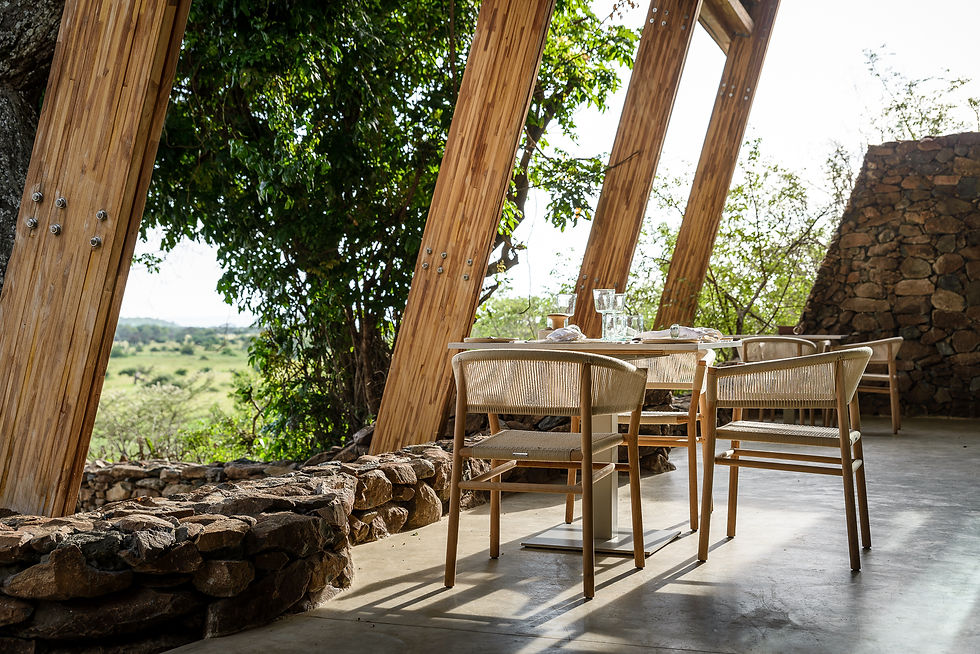
All photographs featured above were supplied by Singita.


